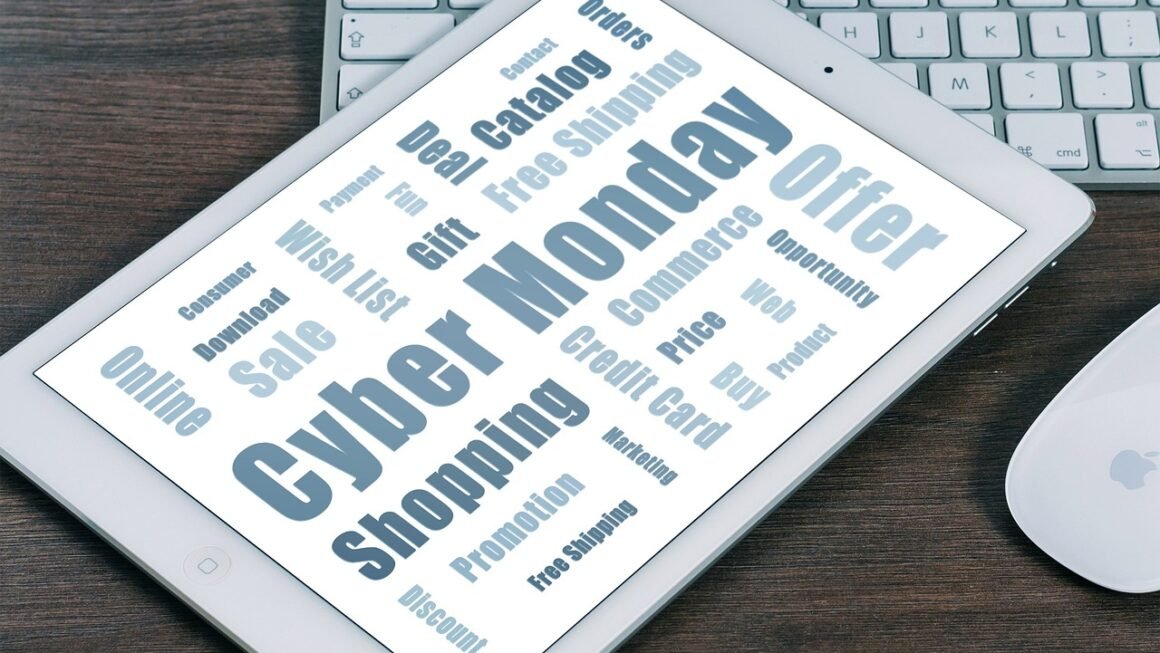Shopping online offers unparalleled convenience, but it also raises valid concerns about security, particularly when it comes to entering your sensitive payment information. A secure checkout process is absolutely crucial for building trust with your customers and ensuring a smooth, worry-free online shopping experience. This comprehensive guide will delve into the essential elements of a secure checkout, providing practical advice and insights to protect both your business and your valuable customers.
The Importance of a Secure Checkout
A secure checkout isn’t just a nice-to-have; it’s a fundamental requirement for any e-commerce business. Failing to prioritize security can lead to devastating consequences, including data breaches, financial losses, and irreparable damage to your brand reputation.
Building Customer Trust and Confidence
- A secure checkout reassures customers that their personal and financial information is protected.
- Visible security indicators, such as SSL certificates and trust badges, instill confidence and encourage completion of purchases.
- A transparent and well-explained privacy policy further strengthens customer trust.
Protecting Sensitive Data
- A secure checkout utilizes encryption protocols (like SSL/TLS) to scramble sensitive data transmitted between the customer’s browser and the server.
- It prevents eavesdropping and interception of information by malicious actors.
- Robust security measures reduce the risk of data breaches and potential legal liabilities.
Reducing Cart Abandonment
- Customers are more likely to abandon their carts if they feel the checkout process is insecure.
- Security concerns are a major reason for cart abandonment, according to numerous studies.
- A secure checkout provides peace of mind, encouraging customers to complete their purchases.
- Actionable Takeaway: Audit your checkout process regularly to identify and address any potential security vulnerabilities. Invest in visible security measures to build trust and reduce cart abandonment.
Essential Elements of a Secure Checkout
A secure checkout is a multifaceted system built on various layers of protection. Implementing these elements is crucial for creating a safe and reliable online shopping environment.
SSL Certificates (HTTPS)
- What it is: An SSL (Secure Sockets Layer) or TLS (Transport Layer Security) certificate encrypts the data transmitted between a user’s web browser and the web server.
- How it works: When a website has an SSL certificate, the URL will begin with “https://” instead of “http://”, indicating a secure connection. A padlock icon will also typically appear in the browser’s address bar.
- Why it matters: SSL certificates are essential for protecting sensitive information like credit card numbers, passwords, and personal data. Google also factors HTTPS into its search ranking algorithm.
PCI DSS Compliance
- What it is: The Payment Card Industry Data Security Standard (PCI DSS) is a set of security standards designed to protect cardholder data.
- Why it’s important: Compliance with PCI DSS is mandatory for businesses that accept credit card payments. Failure to comply can result in hefty fines and penalties.
- How to achieve compliance: Compliance involves implementing specific security controls, such as firewall protection, data encryption, and regular security assessments. Consult with a Qualified Security Assessor (QSA) or Approved Scanning Vendor (ASV) to ensure compliance.
Secure Payment Gateways
- What they are: Payment gateways are third-party services that process online payments securely.
- Examples: Popular payment gateways include Stripe, PayPal, Authorize.Net, and Square.
- Benefits: Payment gateways handle sensitive cardholder data, reducing the risk of security breaches on your own servers. They also offer features like fraud detection and prevention. Choose a gateway that is PCI DSS compliant and uses tokenization.
- Actionable Takeaway: Ensure your website has a valid SSL certificate. Prioritize PCI DSS compliance. Integrate with a reputable and secure payment gateway.
Implementing Security Best Practices
Beyond the core elements, several best practices can further enhance the security of your checkout process.
Strong Passwords and Account Security
- Encourage strong passwords: Implement password complexity requirements, such as minimum length, upper and lowercase letters, and special characters.
- Two-Factor Authentication (2FA): Offer 2FA as an additional layer of security for customer accounts. 2FA requires users to verify their identity using a second factor, such as a code sent to their mobile phone.
- Account Monitoring: Implement systems to monitor account activity for suspicious behavior, such as multiple failed login attempts or unusual purchase patterns.
Address Verification System (AVS) and CVV Verification
- AVS: The Address Verification System (AVS) compares the billing address provided by the customer with the address on file with the credit card issuer.
- CVV Verification: The Card Verification Value (CVV) is a three- or four-digit security code located on the back of the credit card.
- How they help: AVS and CVV verification help prevent fraudulent transactions by verifying the customer’s identity and ensuring they have physical possession of the card.
Regular Security Audits and Penetration Testing
- Security Audits: Regularly review your checkout process and security measures to identify any potential vulnerabilities.
- Penetration Testing: Hire a professional security firm to conduct penetration testing to simulate real-world attacks and identify weaknesses in your system.
- Software Updates: Keep all software, including your e-commerce platform and payment gateway integrations, up to date with the latest security patches.
- Actionable Takeaway: Enforce strong password policies and offer 2FA. Utilize AVS and CVV verification. Conduct regular security audits and penetration testing.
Communicating Security to Customers
It’s not enough to simply be secure; you need to show your customers that you are taking their security seriously. Clear and effective communication is key to building trust and confidence.
Displaying Security Badges and Logos
- Trust Badges: Display trust badges from reputable security providers, such as Norton Secured, McAfee Secure, or BBB Accredited Business.
- SSL Certificate Indicator: Ensure the padlock icon is clearly visible in the browser’s address bar.
- Payment Gateway Logos: Showcase the logos of the payment gateways you use, demonstrating your commitment to secure payment processing.
Clearly Explaining Your Security Measures
- Privacy Policy: Provide a clear and easy-to-understand privacy policy that explains how you collect, use, and protect customer data.
- Security Information Page: Create a dedicated page on your website that outlines your security measures and provides information about SSL certificates, PCI DSS compliance, and other security protocols.
- FAQ Section: Include a FAQ section that addresses common security concerns and provides answers to customer questions.
Using Clear and Concise Language
- Avoid technical jargon and use plain language that all customers can understand.
- Focus on the benefits of your security measures and how they protect customer data.
- Be transparent about any data breaches or security incidents and what steps you are taking to address them.
- Actionable Takeaway: Prominently display security badges and logos. Clearly explain your security measures in your privacy policy and on a dedicated security information page. Communicate transparently with customers about security concerns.
Conclusion
Prioritizing a secure checkout is not merely an option; it’s a necessity for any e-commerce business looking to thrive in today’s digital landscape. By implementing the essential elements, adhering to security best practices, and communicating your security measures effectively, you can build a checkout experience that is not only safe and reliable but also fosters trust and encourages conversions. Remember that security is an ongoing process that requires constant vigilance and adaptation to evolving threats. By staying proactive and committed to security, you can protect your business and your customers, paving the way for long-term success.



